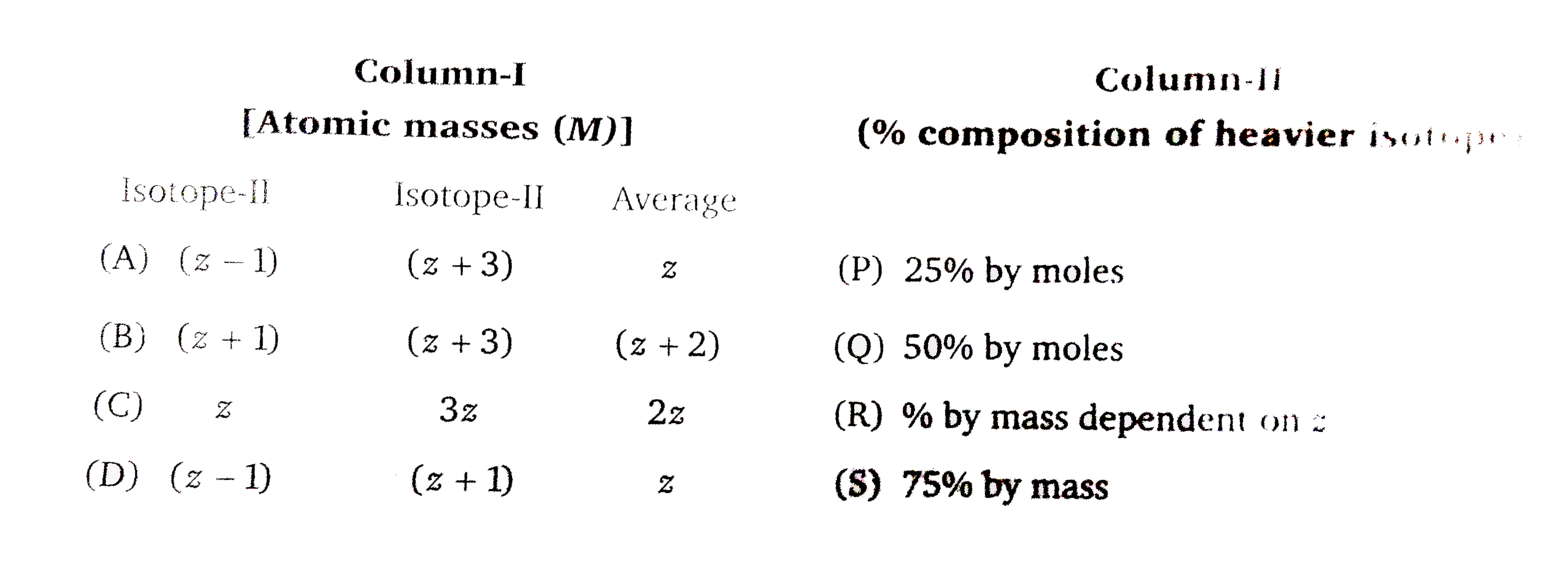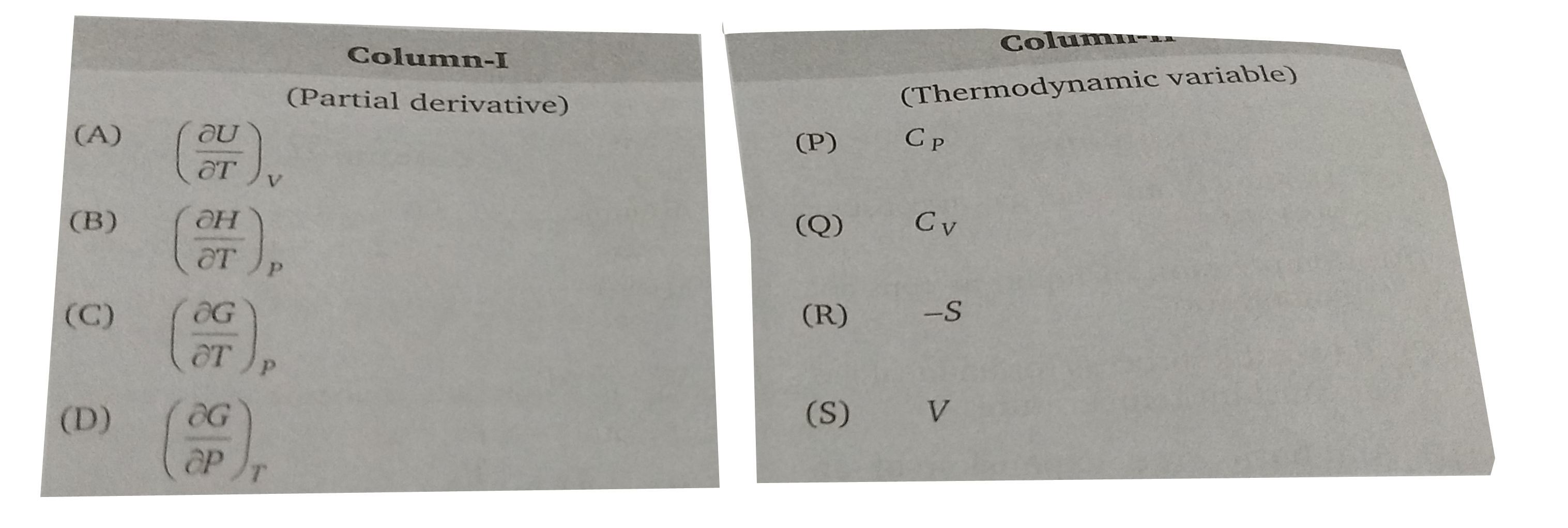STATEMENT-1 : [Fe(CN)6]4−→Fe3++CO2+NO−3, the equivalent mass of reactant is 3.74.
STATEMENT-2 : "Equivalent mass of reactant" = (Mol.mass)/(61).Solution in Telugu
If both the statement are TRUE and STATEMENT -2 is the correct explanation of STATEMENT-1
If both the statement are TRUE but STATEMENT-2 is NOT the correct explanation of STATEMENT-1
If STATEMENT- is 1 TRUE and STATEMENT-2 is FALSE
If STATEMENT-1 is FALSE and STATEMENT-2 is TRUE
The correct Answer is:D
Step by step video & image solution for STATEMENT-1 : [Fe(CN)_(6)]^(4-) to Fe^(3+)+CO_(2)+NO_(3)^(-), the equivalent mass of reactant is 3.74. STATEMENT-2 : "Equivalent mass of reactant" = (Mol.mass)/(61). by Chemistry experts to help you in doubts & scoring excellent marks in Class 11 exams.
Updated on:21/07/2023Topper's Solved these Questions
- STOICHIOMETRYBOOK - NARENDRA AWASTHICHAPTER - STOICHIOMETRYEXERCISE - Level 3 - Subjective Problems
20 Videos
- STOICHIOMETRYBOOK - NARENDRA AWASTHICHAPTER - STOICHIOMETRYEXERCISE - Match the Colum-II
3 Videos
- SOLID STATEBOOK - NARENDRA AWASTHICHAPTER - SOLID STATEEXERCISE - Level 3 - Subjective Problems
1 Videos
- THERMODYNAMICSBOOK - NARENDRA AWASTHICHAPTER - THERMODYNAMICSEXERCISE - Level 3 - Match The Column
2 Videos
Similar Questions
What volume of a liquid (in L) will contain 10 mole ? If molar mass of liquid is 280 and its density is 1.4 g/mL.
View Solution
View SolutionIonic solid Na+A− crystallise in rock salt type structure . 2.592 gm of ionic solid salt NaA dissolved in water to make 2 litre solution . The pH of this solution is 8. If distance between cation anion is 300 pm . Calculate the density of ionic solid (Pkw=13 Pka=13)
View SolutionMatch the following columns

View SolutionSTATEMENT-1 : [Fe(CN)_(6)]^(4) to Fe^(3+)+CO_(2)+NO_(3)^(-) , the equivalent mass of reactant is 3.74. STATEMENT-2 : "Equivalent mass of reactant" = ("Mol.mass")/(61) .
View SolutionFor the reaction, 3Zn^(2+)+2K_(4)[Fe(CN)_(6)]rarr K_(2)Zn_(3)[Fe(CN)_(6)]_(2)+6K^(+) , what will be the equivalent weight of K_(4)[Fe(CN)_(6)] , if the molecular weight of K_(4)[Fe(CN)_(6)] is M ?
View SolutionSTATEMENT-1: Fe-CN bond length is smaller in Fe(CN)−46 than Fe(CN)−36
and
STATEMENT-2: Fe(CN)−36 is more stable than Fe(CN)−46
View SolutionCalculate the n-factor of reactants in the given reactions. (c ) [Fe(CN)_(6)]^(4+)rarr Fe^(3+)+CO_(2)+NO_(3)^(-)
View SolutionCalculate the n-factor of reactants in the given reactions.
(d) Fe(NO3)3→Fe2++NO
View SolutionBalance the following equations in acidic medium [Fe(CN)_(6)]^(4-) + MnO_(4)^(-) rarr Fe^(3+) +CO_(2) + NO_(3)^(-) +Mn^(2+)
View Solution\(K_{4}[Fe(CN)_{6}]\rightarrow Fe^{+3}+CO_{2}+NO_{2}\) In the given chemical equation Equivalent weight of \(K_{4}[Fe(CN)_{6}]\) is \(\frac{M}{x}\). M is molecular weight of \(K_{4}[Fe(CN)_{6}]\). What is the value of \(\frac{x}{11}\)
View SolutionCalculate the equivalent weight of K_(4) [Fe(CN)_(6)] for the following reaction K_(4) [Fe(CN)_(6)] rarr K^(o+) + Fe^(3+) + CO_(2) + NO_(3)^(-) (M = M . Wt. of K_(4) [Fe( CN)_(6) ])
View SolutionK_(4)[Fe(CN)_(6)] is converted into CO_(3)^(-2) , Fe^(+3) ions and NO_(3)^(-) ions. Here_____________
View SolutionSTATEMENT-1 : [Fe(CN)6]4−→Fe3++CO2+NO−3, the equivalent mass of reactant is 3.74.
STATEMENT-2 : "Equivalent mass of reactant" = ("Mol.mass")/(61).
View SolutionEquivalent mass of FeC2O4 in the change, FeC2O4→Fe3++CO2 is
View SolutionWhat is the equivalent weight of the reactant in the following equation? [Fe(CN)6]4−→Fe2O3+CO2+NO2
View Solution
